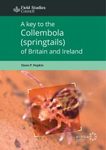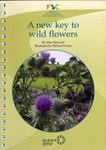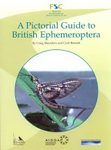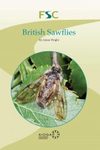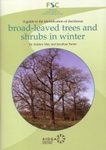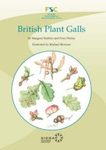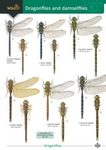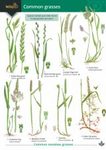Field / Identification Guide Identification Key
By: Ben Rowson(Author), James Turner(Author), Roy Anderson(Author), Bill Symondson(Author)
136 pages, colour photos, colour illustrations, colour distribution maps
![Slugs of Britain and Ireland Slugs of Britain and Ireland]()
Click to have a closer look
About this book
Contents
Customer reviews
Related titles
About this book
Slugs have a notorious reputation as plant pests but many species have more varied ecological roles. The British and Irish slug fauna has changed rapidly over recent years as exotic species join our native wildlife. While researching for Slugs of Britain and Ireland the authors set out to find all 36 know UK species, and were surprised to come across several they didn't recognise. Although slug species can vary enormously in appearance, and several are difficult to identify, further work, including DNA analysis, confirmed that they were distinct species.
This richly illustrated full-colour AIDGAP guide provides comprehensive, picture-based identification charts and species accounts for 46 slug and semi-slug species now known from Britain or Ireland. It includes advice on recognising the pest species and their control in gardens.
Contents
Acknowledgements
Reference specimens
Nomenclatural disclaimer
Introduction 1
Identification 10
Round-backed slugs
Arionidae 30
Short-keeld slugs
Limacidae 62
Agriolimacidae 80
Long-keeled slugs
Milacidae 90
Boettgerillidae 98
Worm-killing slugs
Testacellidae 100
Trigonochlamydidae 106
Semi-slugs
Vitrinidae 108
Dissection & internal features 110
Slug eggs & shells 122
References 126
Appendix (photographed specimen locality data) 131
Index to species accounts: English names 133
Pictorial index 134
Index to species accounts: scientific names 136
Customer Reviews
Field / Identification Guide Identification Key
By: Ben Rowson(Author), James Turner(Author), Roy Anderson(Author), Bill Symondson(Author)
136 pages, colour photos, colour illustrations, colour distribution maps
"Field guides used to be just that – a set of illustrations and keys that enabled accurate identification of a particular group of animals or plants. Recently they have included so much more and this excellent guide is a good example of this inclusive approach. It doesn't neglect the identification task, for there are really clear and full sets of photographs of every species of slug found in Britain and Ireland, showing different aspects, including the underside of the foot, the slugs in their curled shapes, all with annotations and a guide to the colours that the slugs can adopt. There is also a very full, useful and user-friendly multivariate identification section, which is very helpful indeed [...] Overall this could genuinely claim to be a complete text on the biology and ecology of slugs. It can be highly recommended."
- Mark Young, The Bulletin of the British Ecological Society 46(1), March 2015
"[...] In recent years, those working on terrestrial molluscs have expehenced an increasingly frustrating time in the task of identification. Although some species are relatively easy to identify, others can be extremely difficult to separate. It's a problem that has arisen thanks to the arrival and spread of non-native species as well as the realisation that some established species may have been incorrectly named or are actually a group of closely inter-related species, typically requiring specialist Identification techniques to resolve.
[...] Thankfully, in 2014 the publication of a new slug guide should help to resolve many of these issues. This completely new FSC AIDGAP publication, which is the subject of this review, should greatly assist with British and Irish slug identification, at last putting slug biology on a much more certain footing and acting as a 'driver' to encourage further studies of this aspect of our dynamic fauna.
[...] This new guide completely revises and updates slug taxonomy, and provides clarification on slug groups and recently recognised new colonists as well as a number of possibly new British species.
[...] This relatively small and neat volume manages to include a tremendous amount of information; no space is wasted. Its compact dimensions mean that, unlike many identification guides, it really can be used in the field.
This new book represents a quantum leap forward for slug biology, and its appearance should revolutionise work on these fascinating animals. It can really get the 'slug world' moving, and for those already engaged in study it should provide the means to approach identification with a new confidence. Certain aspects of slug identification will never be easy, but the book provides assistance and encouragement to make the task less daunting and even relatively straightforward. By revealing the fascinating diversity it will surely encourage many newcomers to look at slugs in a new light. The guide is also a keystone work that can assist in the study of distributional changes that relate to the spread of invasive species, as well as revealing more about the true range of our established slug fauna.
I go further than just highly recommending this new guide; I would stress that it is an essential resource, not only for those engaged in terrestrial invertebrate work but for all those seriously interested in British natural history from the back garden to the wildest and most remote locations in the country."
- Martin Willing, British Wildlife 25(5), June 2014





















